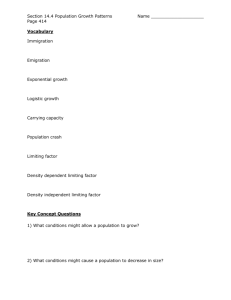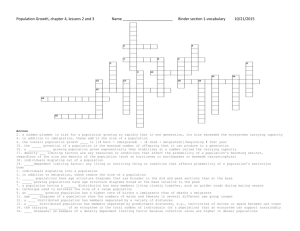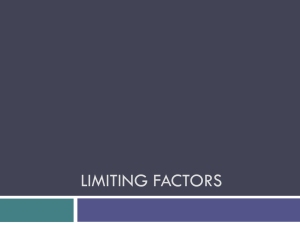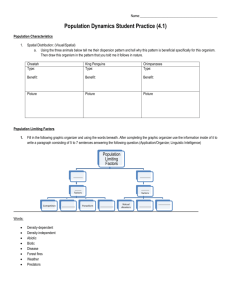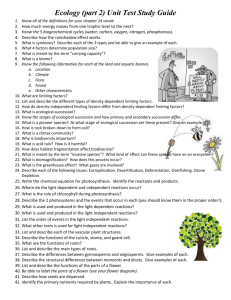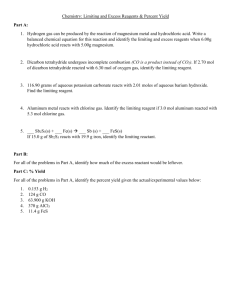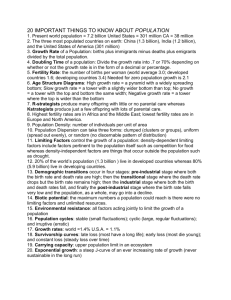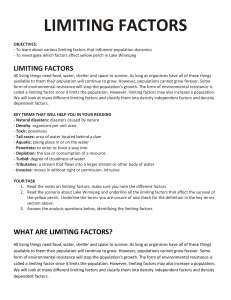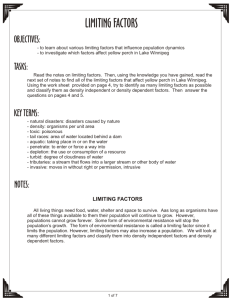Limiting Factors worksheet
advertisement
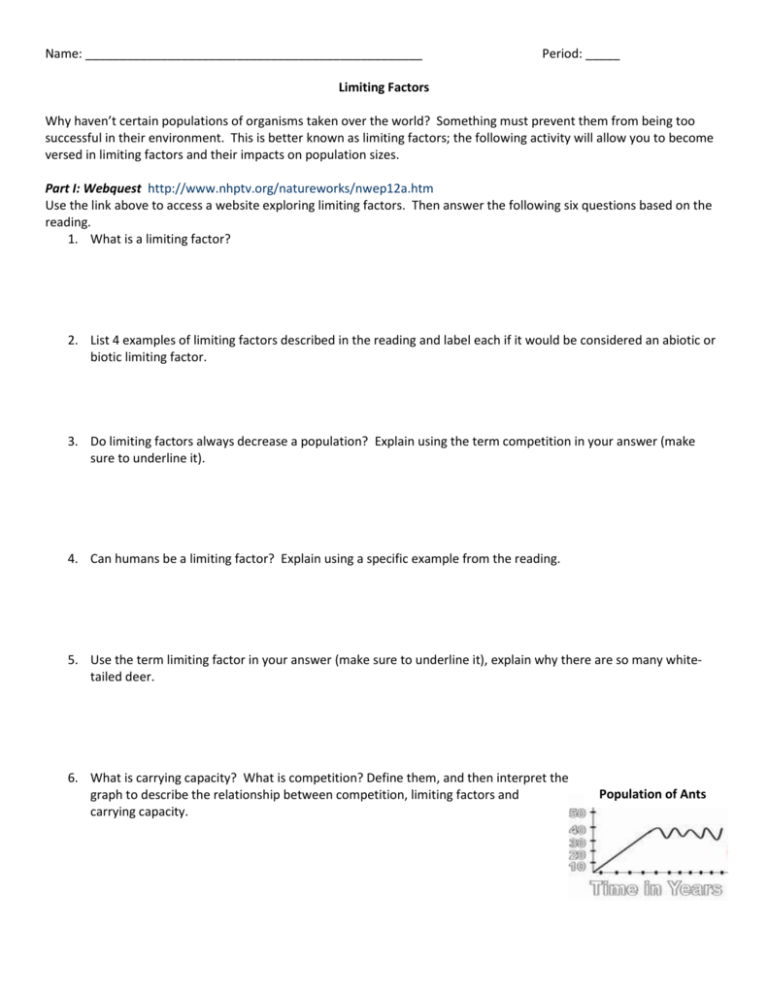
Name: _________________________________________________ Period: _____ Limiting Factors Why haven’t certain populations of organisms taken over the world? Something must prevent them from being too successful in their environment. This is better known as limiting factors; the following activity will allow you to become versed in limiting factors and their impacts on population sizes. Part I: Webquest http://www.nhptv.org/natureworks/nwep12a.htm Use the link above to access a website exploring limiting factors. Then answer the following six questions based on the reading. 1. What is a limiting factor? 2. List 4 examples of limiting factors described in the reading and label each if it would be considered an abiotic or biotic limiting factor. 3. Do limiting factors always decrease a population? Explain using the term competition in your answer (make sure to underline it). 4. Can humans be a limiting factor? Explain using a specific example from the reading. 5. Use the term limiting factor in your answer (make sure to underline it), explain why there are so many whitetailed deer. 6. What is carrying capacity? What is competition? Define them, and then interpret the graph to describe the relationship between competition, limiting factors and carrying capacity. Population of Ants Part II: Case Study Obtain a handout about limiting factors and the Yellow Perch in Lake Winnipeg from your teacher. After you read it, answer the questions below. Please return the handout to your teacher when you are finished. 1. Explain the difference between density independent and density dependent limiting factors. 2. From the article “Yellow Perch in Lake Winnipeg,” identify and describe 5 of each type of limiting factor in the table below. Density Independent Limiting Factors Density Dependent Limiting Factors 1. 1. 2. 2. 3. 3. 4. 4. 5. 5. 3. Each of the statements below involves a situation that will affect the growth of a population. Classify the statements as density dependent or density independent AND give a reason for your choice. a. Rainbow smelt and yellow perch attempt to occupy the same area. The more aggressive smelt survive; the perch do not. b. A severe flood brings a lot of sediment and silt into Lake Winnipeg. The turbidity of the lake increases greatly. c. A drought decreases the water level in Lake Winnipeg. The carrying capacity of the lake decreases. d. Due to the introduction of rainbow smelt, Lake Winnipeg becomes crowded and some fish species do not survive. e. Since northern pike prey on yellow perch, an increase in the perch population causes an increase in the pike population. f. Many fish die due to an increase in water temperature. g. Due to over-fishing, the number of walleye in Lake Winnipeg decreases. h. A population is growing quickly when parasites cause disease to spread quickly. i. Since lake sturgeon migrate long distances to spawn, many do not survive the trip.
